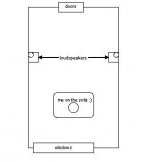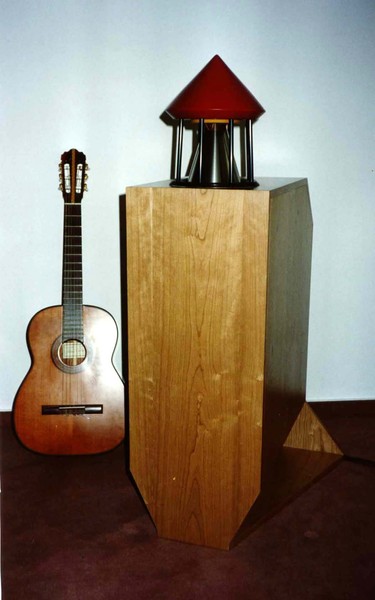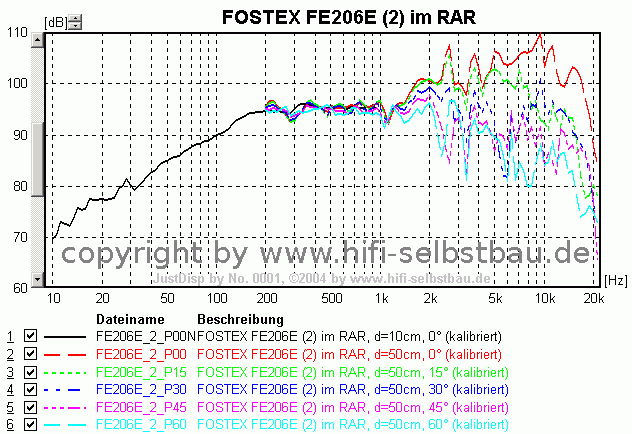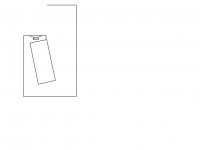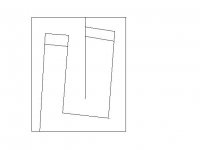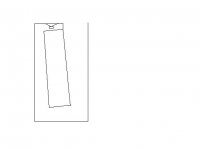Hi to all!
perhaps You might find this thread interesting:
http://www.diyaudio.com/forums/show...threadid=121385
I propose new method of positioning of omnidirectional speakers,
works with fullrange
no diffusers needed
explanation of attached image taken from the other thread:
best,
graaf
perhaps You might find this thread interesting:
http://www.diyaudio.com/forums/show...threadid=121385
I propose new method of positioning of omnidirectional speakers,
works with fullrange
no diffusers needed
explanation of attached image taken from the other thread:
I have very unusual loudspeakers which I have built some time ago with those room-speaker interface things in mind. These are very short omnidirectional loudspeakers. They are just 20 cm high and have 8 inches wide range driver on top and firing upwards.
The loudspeakers are to work on the floor – the driver is only 20 cm above the floor – and against the wall.
In this positioning they happen to be quite similar to the late Stig Carlsson designs (carlssonplanet.com, but the Carlssons are two-way and much more complicated because of that) but were not inspired by them.
I didn’t know the Carlssons when I was building these and my first and main aim was to eliminate the detrimental effect of early floor and ceiling reflections without resorting to unavailable true linesource (like Beveridge)
The second aim was to build loudspeaker least visually obtrusive, loudspeaker that would be practically invisible in the listening room (which in may case at the time was also a living room). Perhaps it was even equally important goal.
But frankly speaking I wasn’t thinking a lot and I think now that I really didn’t know what I was doing and still I don’t – I have no technical background – and it was and it is all mostly intuitive.
But the outcome appeared to be quite satisfying. This is still work in progress. Achilles heel of the loudspeakers are 8 inches Fostex wide range drivers which have major resonant problems in the break-up area. Out of the box they were literally howling at me. After some driver-mutilating (i.e. tweaking) I can say that these problems are only partially solved for the time being and I am looking for a different driver
Soon I will have a new listening room that is 350 cm wide and 550 cm long. Not too big and not the best proportions but I can arrange it specifically for audio purposes.
I am considering positioning the speakers against the opposite longer walls (scheme attached). Stereo basis would be 330 cm. The listener is to be located 200 cm from stereo basis, 250 cm from both speakers
All this with the questions of minimizing early reflections in mind and particularly with what Dr. Geddes has written on this forum.
A big thanks goes to Dr Geddes!
To my not very big surprise the resulting set up happens to be very much like Beveridge positioning of his line source electrostatics.
best,
graaf
Attachments
hm said:Hello,
do you make any measurements to compair it?
unfortunately I am not able to make any measurements
I am not a technical person
just a music lover
although I did simple calculations of reflections showing much better (than typical) reflection delay pattern
it is all discussed in the other thread
in case of Your speakers an absorber on the adjacent wall can be required because of their particularly low directivity, Fostex drivers we use are progressively beaming in the high frequencies of course
and also the problem of the ceiling reflection will not be eliminated (I am not sure what is vertical directivity of Your speakers)
hm said:
my experience with DDD driver and the
TROMBONE .. has shown min. distance to a wall ~65 cm.
yes, I am not surprised and I perfectly understand that
this requirement of min. 65 cm distance in case of Your speakers is supported by the same theory that supports positioning right next to opposite walls in my proposal
but, well, instead of discussing theories and measurements why not just give it a try?
the proof of the pudding is in the eating
happy experimenting!
best,
graaf
Here is the link to Harold Beveridge's white paper on the subject from 1976.
More info in his patents at bevaudio.com
http://bevaudio.com/White_Paper.htm
More info in his patents at bevaudio.com
http://bevaudio.com/White_Paper.htm
Don Bunce said:Here is the link to Harold Beveridge's white paper on the subject from 1976.
More info in his patents at bevaudio.com
http://bevaudio.com/White_Paper.htm
yes, that is correct
The idea was inspired mainly by Beveridge and also by Stig Carlsson (both given credits in my first post in the original thread at "Loudspeakers", link above)
I sort of combined their approaches with the results of my own experiments
it appears that true line source is not needed for it to work
an omni speaker, especially a short one (Carlsson-like) and based on a appropriate fullrange driver will do the job
best,
graaf
oops, the link to orginal thread is invalid 
no problem, the link to the original thread once again, now valid: http://www.diyaudio.com/forums/showthread.php?s=&threadid=121385&pagenumber=1

no problem, the link to the original thread once again, now valid: http://www.diyaudio.com/forums/showthread.php?s=&threadid=121385&pagenumber=1
graaf said:oops, the link to orginal thread is invalid
no problem, the link to the original thread once again, now valid: http://www.diyaudio.com/forums/showthread.php?s=&threadid=121385&pagenumber=1

Hi, And the point of restarting the same thread is ?
sreten said:
Hi, And the point of restarting the same thread is ?/sreten.
well, do I have to explain myself?
ok
actually two points:
1) the original thread turned into complicated and occasionally hot discussion between us (Etienne88 and me) and Dr Geddes on this specific setup, which was not my intention, I wanted more general discussion on "room-speaker interface"
2) the topic of this specific setup is particularly interesting for omnidirectional and/or full range drivers users and the original thread may be just overlooked (because the title of it is to general)
therefore I also posted a link in "DIY omni directional speakers" thread
ok? am I excused?
best,
graaf
Now that your link to the other thread is working,I went back and read through it. I see you have linked the white paper several times already. Oh,well,maybe it will be of some use to others who haven't read the original thread...
A friend of mine has a pair of the Beveridge speakers,he is still waiting for Rick to refurbish the panels,so I haven't heard them properly set up yet.
On my ever increasing list of things to do is build some full range(omni-directional) speakers,will have to try this placement.
A friend of mine has a pair of the Beveridge speakers,he is still waiting for Rick to refurbish the panels,so I haven't heard them properly set up yet.
On my ever increasing list of things to do is build some full range(omni-directional) speakers,will have to try this placement.
to save everyone interested in the setup reading through the lengthy original thread let me quote Etienne88 describing his listening impressions:
best,
graaf
2) the bass output is much stronger. This is due to the fact that the LS is much closer to 2 surfaces: the floor and the side wall. Nevertheless I can now locate where the bass is coming from what I couldn't do before. It is not pin point localisation but still!
3) I am not sure if the room disappeared but I can say that there is a feeling of space that I did not have before. For example, with a recording made in a church, the church has become much bigger than before.
4) I will tend to say that I have a more 3D feeling but I lost some depth, that for sure! the 3D feeling might come from the LS positioning but as well from the fact that I don't see the drivers any more (they are hidden from my view by two couches that are facing each other along the side walls).
5) this one seems a bit contradictory to me and it is kind of hard to explain: I have deeper silences between the notes but it doesn't sound as clear as with the drivers facing me. The "deeper silences" thing comes from the fact that I can now hear some noises from the CD player while listening to music! About the clear sound: I have the feeling that I am much far away from the musicians than before. This is maybe linked to the lake of treble I feel with this set up...
6) The sweet spot has grown for a tiny little spot to an area!
What I really like with this set up is the fact that the sound is there, just there, not thrown in your face
I put my speakers back in the front firing position some days ago. After about 3 songs, I moved them back lying along the walls. It really surprised me!
best,
graaf
el´Ol
Thanks,
my measurements with TRUMPET 0,15,30° B200
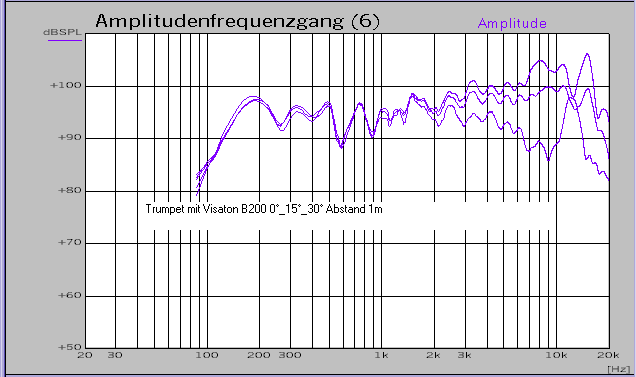
try better two Hx 160 in a smaller Saxophon,
double horn are smaller, below ~50 Hz flat 4 Ohm,
more soundstage by indirect driver and more bass,
the short horn makes the deepest bass !!?
the membran movement is linear and the impedanz
reduce as well, much better than a single driver solution
can be!
One invers Hx160 in a short fronthorn, above ear height,
fills up the SPL to ~800 Hz, the HX160 need it, nearly 98 dB
down to 35 Hz might be possible.
Ich rechne Dir gerne die Breite aus, mit Plan für einen Test.
Thanks,
my measurements with TRUMPET 0,15,30° B200

try better two Hx 160 in a smaller Saxophon,
double horn are smaller, below ~50 Hz flat 4 Ohm,
more soundstage by indirect driver and more bass,
the short horn makes the deepest bass !!?
the membran movement is linear and the impedanz
reduce as well, much better than a single driver solution
can be!
One invers Hx160 in a short fronthorn, above ear height,
fills up the SPL to ~800 Hz, the HX160 need it, nearly 98 dB
down to 35 Hz might be possible.
Ich rechne Dir gerne die Breite aus, mit Plan für einen Test.
Graaf,
You forgot my first argument in favor of the mentioned LS positioning:
 Even if it does not "sound" better.
Even if it does not "sound" better.
Regards,
Etienne
You forgot my first argument in favor of the mentioned LS positioning:
I found it quite important!1) the WAF is bigger! My girlfriend said it was much better looking since the LS almost disappeared instead of being in the "middle" of the room.
Regards,
Etienne
Hello el´Ol,
i don´t think so,
look my TUBA and ALPHORN, near a tapped.
The TUBA works because ~ 7 L press chamber and soft fibre
reduced the peaks over 100 Hz, most BLH gets to loud at 150 Hz.
a matter of size, length and mouth.
the ALPHORN has only a little press chamber, so the peak is louder, that why it is useful for only 2 Oktaves. Because the ALPHORN is so little it is useful to end the mouth not abrupt into the room, look the last 75 cm of the ALPHORN!!
For TH i can only repeat:
take two, volvos 6,5" and a ~ 70cm shorter with a 5", it might be
better than a 8-10" TH. read "about what" the double horns.
by the possible partial delete over~ 100 Hz, it might be useful over 200 Hz.
Ob man das versteht? nicht ohne Lesen der Seite.
With your fullrange construction you will hear delayed mid reflexions caused by the mouth construction.
i don´t think so,
look my TUBA and ALPHORN, near a tapped.
The TUBA works because ~ 7 L press chamber and soft fibre
reduced the peaks over 100 Hz, most BLH gets to loud at 150 Hz.
a matter of size, length and mouth.
the ALPHORN has only a little press chamber, so the peak is louder, that why it is useful for only 2 Oktaves. Because the ALPHORN is so little it is useful to end the mouth not abrupt into the room, look the last 75 cm of the ALPHORN!!
For TH i can only repeat:
take two, volvos 6,5" and a ~ 70cm shorter with a 5", it might be
better than a 8-10" TH. read "about what" the double horns.
by the possible partial delete over~ 100 Hz, it might be useful over 200 Hz.
Ob man das versteht? nicht ohne Lesen der Seite.
With your fullrange construction you will hear delayed mid reflexions caused by the mouth construction.
hm said:Hello,
why not! check the length.
if you take two enclosures you can change
(optimize) the mouth distance!
Hello hm!
The ratio in "Failure No. 1" is 4/3, in contrast to 3/2, as you propose. That the shorter horn opens slower should be good, as your observation is that the shorter horn goes lower. Maybe I should try.
About the tapped horn:
If I understand it right, you claim that the horns in your double horn concept interact outside the box, and there is also a Decware project that indicates that the air doesn´t necessarily have to be squeezed in somewhere:
http://www.decware.com/paper93.htm
So I guess I will also try this (picture), even if the chances to get something reasonable are low. Construction is simple and looks far less monolithic due to the rectangular cut-out.
Attachments
- Status
- This old topic is closed. If you want to reopen this topic, contact a moderator using the "Report Post" button.
- Home
- Loudspeakers
- Full Range
- positioning of omnidirectional fullrange speaker
